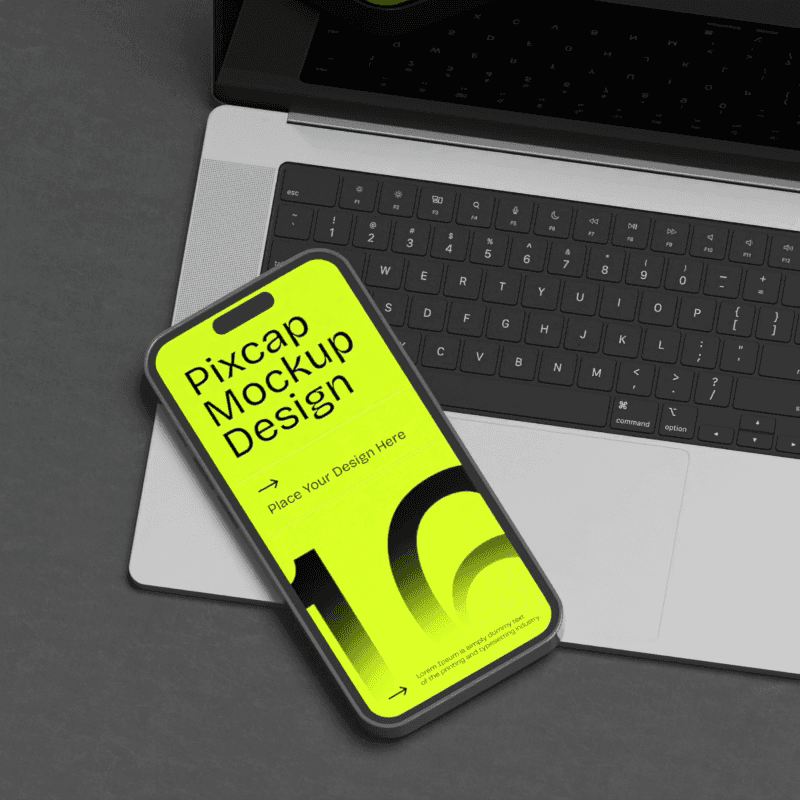Imagine stepping into a world that defies the limitations of space and time, where reality blends with imagination to create experiences so vivid they provoke our senses. Imagine no more; this is the realm of 3D illustration—a place where artists conjure up lifelike three-dimensional images that jump off the screen, engaging viewers in an almost tangible dialogue. But what exactly is 3D illustration? It's not just an artistic trend; it's a revolution in visual communication, shaping how we perceive and interact with digital environments. From eye-catching advertisements to immersive movie experiences, 3D illustrations are becoming an integral part of our daily visual landscape.
What Is 3D Illustration?
Definition of 3D Illustration
In essence, to ask "what is 3D illustration" is to explore the frontier between art and technology. At its core, a 3D illustration is a digital artwork created using computer software that allows artists to generate graphics exhibiting depth, height, and width within three-dimensional space. These illustrations distinguish themselves from traditional two-dimensional artwork by creating a sense of volume and environment that can be rotated and viewed from multiple angles.
Think of it as sculpting on a digital canvas where each creation can exhibit realistic textures, lighting effects, and shadows. With this technique, objects that previously lay flat on paper stand tall against backgrounds that stretch far beyond any artist's physical reach. You could say that 3D illustrations bring drawings to life!
Importance of 3D Illustration in Various Industries
The significance of 3D illustration cannot be understated—it has transformed how businesses communicate visually with their audiences:
Advertising: Captivating visuals grab consumer attention quickly.
Architecture: Detailed renderings help clients visualize proposed structures.
Medical field: Clear anatomical diagrams aid in education and diagnoses.
Gaming industry: Offers gamers intricate worlds brimming with realism.
Film production: Provides filmmakers tools for stunning visual effects.
Above all else, the ability to provide viewers with an interactive experience sets apart these illustrations from conventional media—opening doors for engagement strategies previously unimagined.
Examples of 3D Illustration in Marketing and Advertising
Marketing professionals recognize the unmatched potential for impact inherent to 3d illustrations:
Product Demonstrations: Companies like Apple use hyper-realistic 3d renderings to showcase products before they even physically exist.
Animated Commercials: Automobile companies often employ full-scale animations enveloping their vehicles in futuristic landscapes or extreme conditions without leaving the studio.
A simple billboard advertisement transforms into a conversation piece when augmented reality features are incorporated. Pedestrians stopping mid-stride to engage with an ad isn't just effective marketing; it's proof of how compelling good quality investment in illustration can be.
By leveraging these dynamic assets across various touchpoints—from websites to television commercials—brands create deeper connections with consumers while narrating their stories in more profound ways than static images ever could achieve on their own. This metamorphosis not only entices customers but makes them linger longer in this seamlessly crafted alternate reality—an absolute victory for any marketer!
How to Create a 3D Illustration
Creating a 3D illustration is like crafting a sculpture that exists in the digital space—it's part art, part technical prowess. Whether you’re aiming to breathe life into graphic designs, animate characters for a game, or visualize architectural marvels before they're built, understanding the process of creating 3D illustrations is the cornerstone of these creative endeavors.
Introduction to 3D Modeling Software
First off, let’s set the stage with an introduction to 3D modeling software—the artist’s virtual studio. This software allows you to sculpt, texture, and render three-dimensional objects and scenes. Some of the big names you might be familiar with include Blender—a powerful tool with the added perk of being free—Autodesk Maya, known for its robust feature set used widely in professional settings, and Cinema 4D, famed for its user-friendly interface.
Choosing the right software could be compared to selecting your favorite brush as a painter; it can shape your style and workflow significantly. Don’t rush this choice—many offer trials or free versions so you can find one that feels intuitive to you.
Step-by-step Process of Creating a 3D Illustration
Embarking on creating your first piece? Let’s break down the journey:
Conceptualization: Every great artwork begins with an idea. Sketch out what you want your final image to represent.
Modeling: Using your chosen software, start shaping basic geometrical forms into more complex models that resemble your concept.
Texturing: Think of texturing like painting over your model. Here’s where you add colors and details that bring realism or artistic flair.
Lighting: Just like in photography, lighting can dramatically alter mood and perception in illustrating—plan and execute how light interacts with your scene.
Rendering: This is crunch time when all elements are computed together into the final image—often this is resource-intensive but thrilling as your illustration comes to life.
Post-production: Tweaks and edits made after rendering can enhance visual effects or correct minor issues—a finishing touch akin to glazing pottery.
Each step presents its array of choices requiring both creativity and technical knowledge—all resulting in myriad possibilities limited only by imagination.
Tips and Tricks for Creating Realistic and Engaging 3D Illustrations
As with any craft, there are tips that can elevate an ordinary 3D illustration into something extraordinary:
Pay meticulous attention to scale and proportion within your scene; inconsistencies will quickly shatter illusion.
Study real-world physics: observe how materials interact with light differently—a metal surface reflects differently than wood—and replicate these nuances.
Simulate depth-of-field effects by blurring distant objects subtly—an age-old trick which helps mimic human eye perception in imagery.
Leverage tutorials from seasoned artists who share their secrets online; it's a generous community out there!
Mindful practice coupled with constant learning ensures not just realistic but truly captivating illustrations capable of ensnaring both heart and mind.
Through these stages—from forming an initial spark in conceptualizing to infusing reality into renders—you'll find yourself wielding incredible power at your fingertips: The ability to create worlds once confined solely within imagination bounds. It's here where science meets artistry; where diligent sequencing transforms vision into visuals iridescent on screens—for eyes worldwide waiting eagerly for stories told through shades beyond mere spectrums seen under stars' gleams or sunlight beams. Thus unfolds creation—a dance between creator and creation—in illustrious representation: A visual tale birthed beneath banners which herald what we call 'illustration', three-dimensionally rendered alive!
Where Is 3D Illustration Used?
Captivating visuals are fundamental in today’s high-speed, digital world. To stand out, industries leverage the power of 3D illustration to breathe life into ideas and concepts that flat images simply can’t match. Let's take a deeper dive into how this innovative visual tool is reshaping various fields.
Advertising and Marketing Industry
Imagine flipping through a magazine and being drawn to an ad because it seems to jump off the page with its depth and realism. That's 3D illustration hard at work in advertising. Here's how it changes the game:
Consumer Engagement: With their realistic shadows, lighting, and textures, 3D illustrations create memorable experiences that engage potential customers much more robustly than traditional two-dimensional ads.
Brand Identity: Companies use 3D imagery to develop unique brand identities that distinguish them from competitors.
Product Visualization: Before a product hits the market, 3D illustrations enable marketers to showcase products in ways real photography can't, highlighting features from multiple angles and in various environments.
In essence, 3D illustration allows for imaginative yet convincing storytelling — be it for rejuvenating old brands or launching new ones.
Explore 10,000+ customizable 3D illustrations from Pixcap that are perfect for advertising campaigns, websites, and social media posts.
Entertainment Industry
From Hollywood blockbusters to independent games, the entertainment industry is arguably the most visually driven field where 3D illustration plays a star role. In animation films and video games alike:
Characters come alive with personality through dynamic poses and expressions made possible by intricate 3D modeling.
Environments tell stories within themselves as artists illustrate settings full of rich detail that immerse audiences completely.
Props within scenes contribute to world-building, allowing illustrators to refine even minute elements that complement storyline authenticity.
This arena thrives on pushing boundaries—and with advances in technology giving illustrators vast creative landscapes, expect nothing less than magic.
Architectural Visualization
Architects no longer rely solely on blueprints or small-scaled models when presenting their visions; instead they use realistic 3D renders that show every aspect of their design—from natural light flow throughout structures during different times of day to spatial relationships between furniture pieces inside rooms.
Here is why architects are turning toward this tool:
It helps clients envision projects before any actual construction begins.
It aids architects in identifying potential design issues early on.
It acts as an effective marketing tool showcasing architectural skills beyond technical plans drawing attention from prospective clientele.
Thus, architectural visualization elevates not just presentations but also practicality within design processes.
Product Design and Visualization
When developing a new product:
The precision offered by 3D illustrations greatly assists designers in visualizing ergonomic aspects.
Texturing capabilities enhance material representations—metal appears cold and slick whereas fabric looks soft and tactile before anything goes into production which limits cost-intensive prototyping stages considerably.
Simulations demonstrate functionality allowing designers to iterate swiftly ensuring final products match user requirements exactly.
By enabling experimentation with colors, materials' look-and-feel plus overall aesthetics effortlessly – there's no guessing if consumers will understand a product's purpose; clear compelling visuals do that eloquently.
All these domains testify how prolifically useful and multifaceted 3d illustration has become across industries—and I've barely scratched the surface! As we continue exploring other sectors' uses next up: current trends pushing this exciting art form forward even further.
Current Trends in 3D Illustration
In today's dynamic digital arts realm, 3D illustration is continually reinventing itself. Artists and designers push the envelope, not only testing the limits of their software but reshaping our cultural aesthetics and how we interpret visual information. Let’s delve into some of the trends currently redefining this fascinating field.
Realism in 3D Illustration
Realism in 3D illustration has reached astonishing levels. With advancements in rendering engines and texturing tools, illustrators can create images that are virtually indistinguishable from real life. Hyper-realistic renderings can:
Capture the subtleties of light and shadow
Reveal intricate textures down to the pores on a character's skin or fibers in fabric
Emulate realistic physical properties like reflection and refraction in materials
This level of detail fosters a more authentic connection between the imagery and its audience, often blurring the lines between illustration and photography.
Surrealism in 3D Illustration
Parallel to realism, there's a surge in surrealistic 3D art that bends reality as we know it. This trend celebrates creativity that moves beyond boundaries; through surrealism:
Ordinary objects are placed in extraordinary contexts
Laws of physics might be subverted with floating landscapes or liquid rooms
Everyday items transform into living entities with emotions
Surrealist 3D illustrations captivate us by offering an escape into worlds crafted without limits, places where imagination reigns supreme.
Isometric and Flat Design
Straying away from hyperrealism, isometric and flat designs are resurfacing within the digital space. Such trends offer:
A simplified perspective with less reliance on vanishing points.
An aesthetic reminiscent of classic video games but coated with modern polish.
Isometric illustrations provide a unique vantage point - providing depth without relying on traditional perspective rules - suitable for infographics or complex diagrams. In contrast, flat design emphasizes clean lines and vibrant colors over texture or gradients – it preserves clarity while encapsulating modern simplicity.
Motion Graphics and Animation
Finally, motion graphics bind time to 3D illustrations unlocking them from static displays to engage audiences via animation. Innovations here include:
Smooth transitions that bring products or concepts to life.
Character animations establishing narratives within marketing campaigns.
Complex simulations conveying mechanisms behind sophisticated technology.
By incorporating motion into 3D artwork, illustrators extend narratives setting scenes alive – resulting not just in passive viewing experiences but interactive journeys for observers.
Current advances imply that these trends will continue evolving with artists exploring wider creative horizons as technology paves new paths for expression within the intriguing arena of 3D illustration – a domain unlimited by anything other than one's own creativity.
Innovations in 3D Illustration
The sphere of 3D illustration is bursting with innovation, heralding transformative shifts that redefine the limits of possibility. Always at the forefront of these advances is technology's undying contribution to artists and designers alike. One particularly thrilling development stands out: the integration of Artificial Intelligence (AI) into the world of 3D illustration.
Artificial Intelligence in 3D Illustration
Artificial Intelligence, a term that once seemed consigned to science fiction novels, now plays a prominent role in elevating and streamlining the process of creating 3D illustrations. Let's delve into how AI is not just shaping but revolutionizing this field:
Automated Tasks: Firstly, AI algorithms can take on repetitive tasks within the 3D workflow. This includes mundane aspects like optimizing polygons or texturing surfaces, which allows illustrators to focus their talents more on creative endeavors rather than technical minutiae.
Machine Learning Enhanced Creativity: By analyzing vast datasets of images and models, machine learning systems can offer suggestions that might have taken human illustrators hours of trial and error to conceptualize. These AI-driven recommendations are enabling artists to push creative boundaries by presenting combinations and ideas they might not have considered.
Rendering Speed Improvements: Rendering is arguably one of the most time-consuming aspects when it comes to high-quality 3D illustrations. Now, AI-driven tools accelerate this process immensely by intelligently predicting light paths and thereby reducing rendering times without compromising on visual fidelity.
But perhaps what's truly revolutionary isn't just what AI does but how it augments human creativity. Combining an illustrator’s unique vision with AI's capabilities breeds a symbiosis where imagination meets efficiency - thus catapulting creative possibilities into realms we've only begun to explore.
With each technological stride forward, we witness exciting leaps in realism, detail accuracy, texture richness, and motion fluidity – all components crucial for breath-taking 3d illustrations. As we look towards future horizons brimming with potential, it becomes clear that artificial intelligence will continue to be an indispensable ally for those who venture boldly into the domain of digital artistry.
Resources for 3D Illustrators
Embarking on a journey into the realm of 3D illustration can be as exciting as it is demanding. The wealth of resources available to you as a 3D artist is astounding, and sifting through them can sometimes feel overwhelming. To aid you on your quest, I've curated a list of essential online communities, platforms, and tools that will provide not just assets but also the camaraderie and knowledge vital for honing your craft.
Online Communities and Forums for 3D Artists
In my experience, one invaluable resource that constantly fuels my own creative process is the rich network of fellow enthusiasts and professionals congregated in various online communities. Here are some worth participating in:
CGSociety: Dubbed the "Digital Art World's Global Society," CGSociety hosts forums teeming with critiques, feedback opportunities, industry news, and inspirational points of intersection between novices and mentors.
Blend Swap: Especially for Blender users – this community allows artists to share their works in progress or final models; giving others an opportunity to learn from finished projects or contribute by offering enhancements.
Polycount: If game development piques your interest, Polycount is where budding game designers and seasoned pros alike exchange industry insights, showcase portfolios, offer advice, and challenge each other with contests.
Participation in these communities equips 3D artists not only with support but also with a broader perspective on trends and techniques that could potentially evolve their own methodologies. It's about networking – forming connections that often lead to collaborations or job opportunities.
Recommended Software and Tools for Creating 3D Illustrations
Finally—and most crucially—the software arsenal at your disposal dictates how effectively you'll bring imagined realms into tangible form:
Blender:
Open-source
Robust feature set including modeling, animation rigging
Continuous updates
Autodesk Maya:
Industry standard with advanced functionalities
Ideal for animations
Cinema 4D:
Renowned for its user-friendly interface
Perfect mix of powerful features while being approachable
Besides these titans there are other specialized tools like ZBrush – indispensable for sculpting ultra-detailed models – or Substance Painter offering unparalleled texture painting capabilities.
Harnessing these resources forms an ecosystem around you; an interconnected web where skills grow from the seedlings of curiosity into full-flowering expertise thanks to available knowledge bases, shared experiences across forums, pre-existing assets aiding rapid ideation processes alongside cutting-edge tools turning vivid daydreams into palpable visual narratives ready to be showcased to the world.
Conclusion
Embarking on the journey through the manifold dimensions of 3D illustration leads us to remarkable realizations. Not only does this medium amplify storytelling and visual communication, but it also paves the way for advancements in technology and creative expression. By intertwining artistry with technology, 3D illustration breaks down traditional barriers, allowing us to craft experiences that resonate profoundly.
For those captivated by the possibilities of 3D illustration, remember this is a field where your curiosity can flourish. Continuous learning shapes the essence of any successful endeavor in this domain. Embrace both technical skill-building and creative exploration to ensure your illustrations not only capture imaginations but also stand at the forefront of innovation.
Aspiring artists should immerse themselves in communities where knowledge-sharing is rampant—there's much wisdom hidden in collective experience. Meanwhile, staying abreast of industry trends will keep you agile in an ever-shifting landscape. Harnessing tools imbued with AI capabilities may soon become indispensable; they promise to simplify complexities yet demand a keen understanding.
By leveraging diverse resources available online—from forums brimming with peer support to platforms offering robust asset libraries—you set yourself up firmly on the path to mastery. Whether it’s through video tutorials or insightful blog posts, make use of these goldmines generously offered by fellow creators.
In closing, I urge you to continue pushing boundaries, experimenting with styles from realism to surrealism and beyond. The future beams brightly for those who dare to visualize it—and through your hands and mind working as one, there lies the power to shape it into existence. Until next time, keep weaving digital dreams into tangible wonders!














